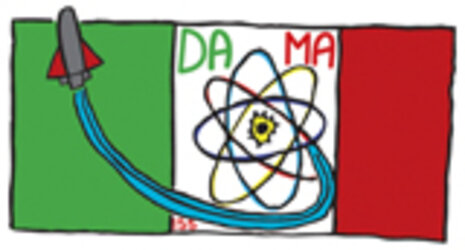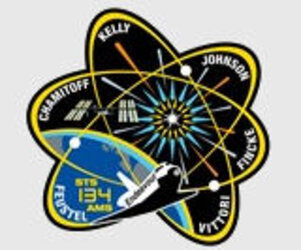Roberto Vittori
Seated in the middle behind the commander and pilot, Vittori will assist them during launch and reentry operations. The European astronaut will also operate the system that physically connects the Shuttle with the International Space Station after rendezvous and docking.
On Flight Day 4 Roberto manoeuvred the Shuttle’s robotic arm to lift the 7-tonne AMS-02 up out of Endeavour’s payload bay and transferred it to the Station.
There, the Station’s Canadarm2 grabbed it, roll out to the main truss and put it down on its mount: an external module on the upper payload attach point (S3). Four astronauts were involved in this slow and careful manoeuvre.
Roberto was designated as the AR-1 astronaut, meaning that he was responsible for operating the Shuttle robotic arm. The complex sequence with the arm included berthing the Express Logistics Carrier (ELC-3), as well as verifying the integrity of all of Endeavour’s thermal tiles during Flight Day 2.
Third ride to space

Roberto is an experienced space flier – he has logged nearly 20 days in space. Since he was assigned to this mission in August 2009, he trained hard at his home base of the European Astronaut Centre in Cologne, Germany. Preparing for his first flight aboard the Space Shuttle, he also worked at the training facilities of NASA Johnson Space Center.
Before six new astronauts joined ESA, Roberto was the youngest member of the European Astronaut Corps. In 2002, at the age of 37, he made his maiden voyage to the International Space Station on his 'Marco Polo' mission, becoming the first Italian to fly on a Soyuz spacecraft to the Station and qualifiied as a Soyuz commander.
His second flight to the Station was also aboard a Soyuz in 2005, on his 'Eneide' mission. As flight engineer on both ascent and return, Roberto was active in piloting and docking the spacecraft. Onboard the Station for 8 days, Roberto performed an intensive series of experiments.
Roberto made his third flight as a result of the agreement between ASI and NASA under which the Italian agency provided NASA with three Multi-Purpose Logistics modules (MPLMs) for transporting cargo to and from the ISS. In exchange, ASI has received flight opportunities for Italian astronauts.
A bridge to the future

Roberto has always found exploration highly motivating and a bridge to the future. In his own words, having ESA astronauts on the International Space Station “will allow us to concentrate upon maximising its utilisation. Europe is unity and diversity. In this sense, each of us can give a different flavour, a different perspective.”
Roberto was born in the ancient city of Viterbo, in the central part of Italy. “When I was a kid I used to be in the woods and play soccer with the other children. Flying an aircraft, or even becoming an astronaut, was something that attracted my imagination, but I would not have ever thought that in the end, step-by-step, I would become one.”
After high school he concentrated on studying physics. He holds a Masters in Aeronautical Sciences from the University of Naples, and a Masters in Physics from the University of Perugia.

However, flying has been his life: he graduated from Italy's Aeronautics Academy and went on to a career in the Italian Air Force, where he flew combat-ready Tornado GR-1 strike aircraft for three years. During that time, he qualified as a formation leader and was promoted Squadron Commander.
Roberto has logged nearly 2500 hours in over 40 different aircraft types. His notable flying skills led him to test pilot training in the United States – and that was when the ambition to become an astronaut first struck him.
Back in his native Italy, he spent several years busy with precision flying and technical studies across a range of test programmes, many of them associated with the new Eurofighter 2000.
“In 1998 I was flying from the test centre at Pratica di Mare, near Rome, when I heard that the Italian space agency was looking for astronauts. I had to apply.”

In July 1998 he was selected as an astronaut by ASI and, one month later, he joined the European Astronaut Corps.
For his third mission to space, Roberto moved to the Johnson Space Center, in Houston, to continue his training. Married with three children, he also looks towards a mission to Mars. “That extraordinary journey will be for the next generation of astronauts. In a few years’ time, spaceflight could be at least a little easier and much more accessible to people.”







